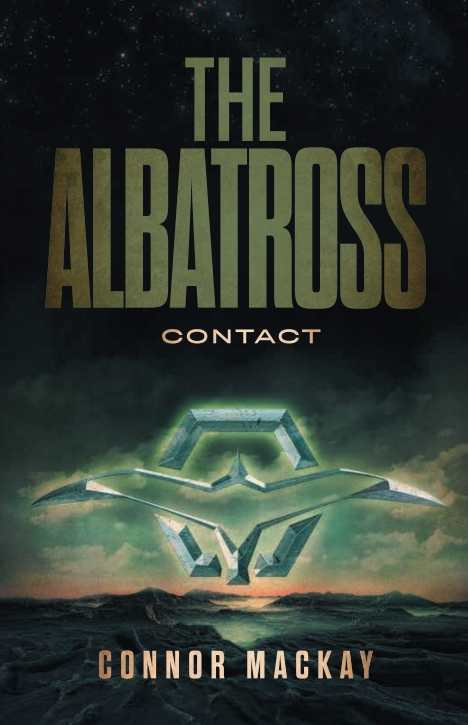
The Albatross
Contact
Providing fertile ground for a new series, The Albatross: Contact is an action-packed and contemplative science fiction epic.
Connor Mackay’s space epic The Albatross: Contact examines the mental cost of war as humans and aliens unite against a threat that seems unstoppable.
A harrowing military career and the loss of his wife and daughter drive Will to find solace at the bottom of a bottle. His friend and fellow soldier, Frank, tries to keep Will from sliding too deep into despair and alcoholism. But those immediate concerns go out the window when numerous alien craft arrive on Earth and remain stationary for months.
It turns out, the aliens haven’t traversed untold distances to eradicate or enslave humanity, but to beg for assistance. The Lumenarians have waged war with the Forsaken and attrition is beginning to take a toll, prompting the advanced warrior race to send envoys and request help from any able-bodied species. Will and Frank volunteer and embark on a journey across the stars, returning to war.
There are three perspective characters whom the story rotates through: Will; Sarah, a fellow volunteer; and the leader of the Lumenarians, Arthur. Will’s military past helps to propel him into a leadership position, but also ensures that the strangeness of the ship, aliens, and technology are all viewed through a human lens. Sarah’s relative civilian perspective, and burgeoning relationship with Will, results in a different outlook and helps to humanize Will, who tends to retreat into his mind too often. Arthur’s sections are perhaps the most engaging: his alien outlook paints the events in drastic comparison, even as he delves into Earth’s history through books and discussions with Will while the ship races toward the battlefield.
The perspective shifts help the story to stay fresh, as each rotation requires a slight rewind of time to give two or three versions of the same events, including a harrowing simulation that threatens to break Will and Sarah while Arthur watches from outside. The clever use of translator technology—characters speak in their native tongues, and everyone else hears the translation and vice versa—means that each character has a distinct voice, with Arthur standing out because of his tendency toward grandiose speech, peppered with poetry drawn from his collection of Earth novels.
The world is built, and characters are developed, at a mesmerizing, slow-burn pace. The humans board the ship and spend the bulk of the story training and learning in a unique situation: the means of travel compresses time relative to Earth’s. Amid strange technology and even stranger alien beings, Will relies on pop culture references for deflection, to prevent himself from feeling real trauma. These references also help to maintain a balance between the book’s human and alien influences.
An explosive climax, and a mystery involving a mysterious figure, Mason, help to wrap up this volume of the story while leaving room for future books. Providing fertile ground for a new series, The Albatross: Contact is an action-packed and contemplative science fiction epic.
Reviewed by
John M. Murray
Disclosure: This article is not an endorsement, but a review. The publisher of this book provided free copies of the book and paid a small fee to have their book reviewed by a professional reviewer. Foreword Reviews and Clarion Reviews make no guarantee that the publisher will receive a positive review. Foreword Magazine, Inc. is disclosing this in accordance with the Federal Trade Commission’s 16 CFR, Part 255.
